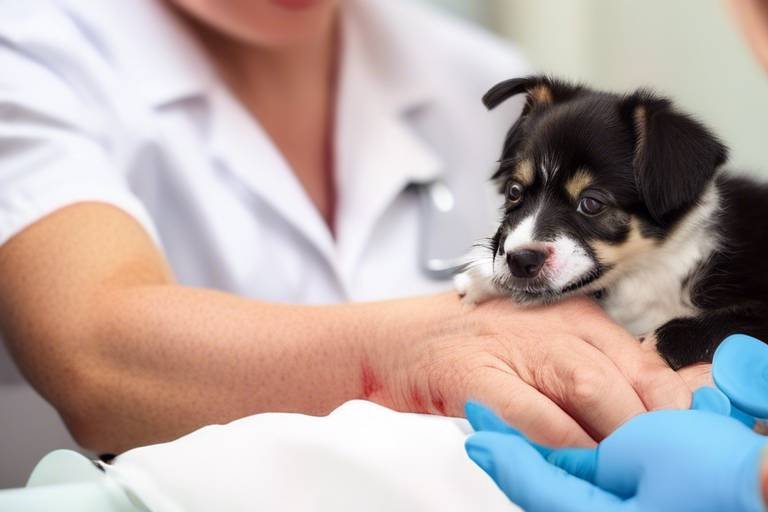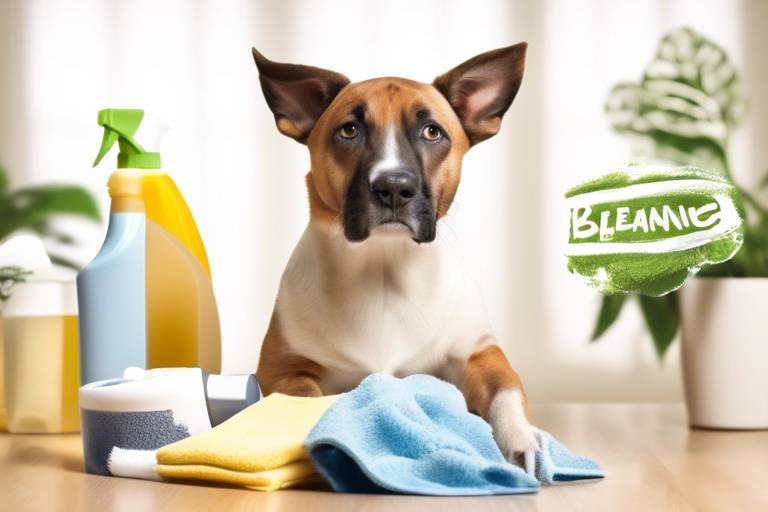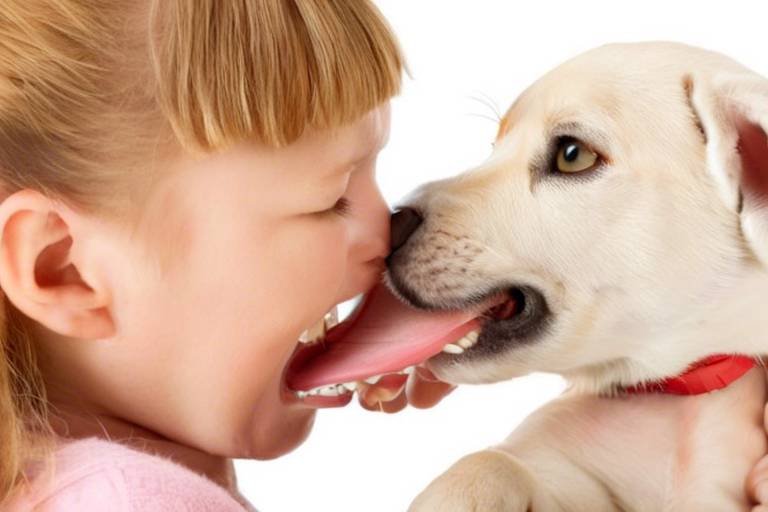The Benefits of Regular Exercise for Cats
Every cat owner knows that our feline friends can be quite the couch potatoes. But did you know that incorporating regular exercise into your cat's routine can lead to a plethora of benefits? From improving their physical health to keeping their minds sharp, exercise is a vital component of a happy and healthy cat life. Imagine your cat, once a sleepy ball of fluff, transformed into a lively, energetic companion, chasing after toys and enjoying life to the fullest. In this article, we will explore the numerous advantages of regular exercise for your cat, ensuring they thrive in both body and mind.
Regular exercise significantly boosts a cat's physical health by promoting weight management, improving cardiovascular fitness, and enhancing muscle strength. Just like humans, cats need to stay active to maintain a healthy weight and prevent obesity. Obesity can lead to a host of health issues, such as diabetes, joint problems, and even heart disease. Think of exercise as a magic pill that can help your cat live a longer and healthier life. A few minutes of play each day can make a world of difference, transforming your kitty into a more agile and vibrant version of themselves.
Engaging in physical activities offers essential mental stimulation for cats. Cats are natural hunters, and without outlets for their energy, they can easily become bored, leading to stress and behavioral issues. Have you ever noticed your cat staring blankly at the wall or getting into trouble? This is a sign they need more stimulation! Regular exercise helps to keep their minds sharp and engaged, reducing the risk of anxiety and promoting overall happiness. It's like giving your cat a mental workout, keeping them alert and satisfied.
One of the best ways to ensure your cat gets enough exercise is through interactive playtime. Whether it's with toys or engaging in play with you, these sessions not only encourage physical activity but also strengthen the bond between you and your pet. Imagine the joy of seeing your cat pounce and leap, showcasing their natural hunting instincts! Interactive playtime can turn a mundane day into a thrilling adventure for your furry friend.
There are various interactive toys available that can keep your cat engaged and active. Here are some popular options:
- Feather Wands: These toys mimic the movements of birds, enticing your cat to leap and chase.
- Laser Pointers: Cats love to chase the elusive red dot, providing them with an excellent workout.
- Ball Toys: Simple yet effective, these toys encourage your cat to run and pounce.
These toys not only stimulate your cat's hunting instincts but also provide essential exercise, keeping them fit and happy.
Regular play sessions with humans are not just about exercise; they enrich a cat's social environment. Cats are social creatures, and interaction with their owners can lead to improved emotional health and reduced loneliness. Think of it as a two-way street: while your cat gets the exercise they need, you also enjoy the companionship and joy of watching them thrive. It's a win-win situation!
Establishing a structured exercise routine is crucial for ensuring that your cat receives adequate physical activity daily. Just like us, cats thrive on routine. Setting aside specific times for play can help your cat anticipate and look forward to their exercise sessions. This consistency is vital for their overall health and well-being, making it easier for you to monitor their activity levels and adjust as necessary.
Maintaining a healthy weight is crucial for cats, and regular exercise plays a significant role in preventing obesity and its associated health problems. Obesity in cats can lead to serious issues, including diabetes and joint pain. By keeping your cat active, you can help them avoid these health pitfalls. Think of exercise as a shield, protecting your furry friend from the dangers of excess weight.
Knowing your cat's ideal weight is essential for monitoring their health. Regular vet check-ups can help determine the optimal weight range for your feline friend. Your vet can provide guidance on how much exercise your cat needs based on their age, breed, and health status. This information is invaluable in ensuring your cat stays fit and healthy.
Understanding your cat's caloric needs and how exercise impacts their diet can help maintain a healthy weight. Just like humans, cats require a balance of calories in and calories out. By ensuring they receive the proper nutrition alongside regular activity, you can help your cat achieve and maintain their ideal weight. This balance is key to a happy, healthy life for your furry companion.
- How much exercise does my cat need? - Most cats should have at least 15-30 minutes of playtime each day.
- What are some signs my cat is not getting enough exercise? - Look for signs of boredom, weight gain, or destructive behavior.
- Can I exercise my cat indoors? - Absolutely! Many interactive toys and games can be played indoors.
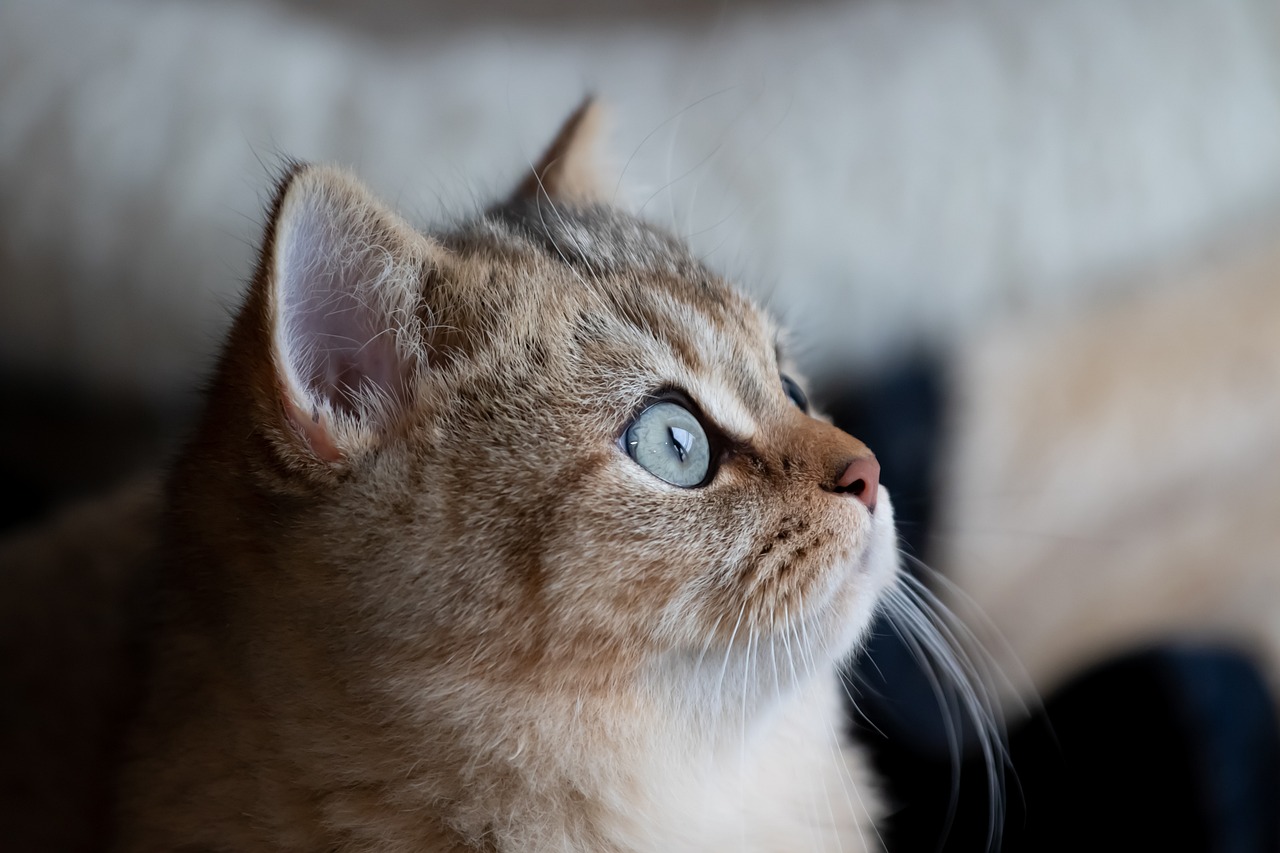
Physical Health Improvements
Regular exercise is not just a luxury for our feline friends; it’s a vital component of their overall health. Just like humans, cats benefit immensely from maintaining an active lifestyle. When we talk about , we’re diving into a world of benefits that can enhance your cat's life significantly. Think of exercise as the secret ingredient that keeps your cat's body functioning like a well-oiled machine.
One of the most noticeable benefits of regular exercise is weight management. Obesity in cats can lead to a myriad of health problems, including diabetes, heart disease, and joint issues. By engaging in daily physical activities, cats can burn off excess calories and maintain a healthy weight. Imagine your cat as a little athlete; with the right amount of exercise, they can stay fit and agile, ready to pounce on their next toy or chase after that elusive laser dot!
Additionally, exercise improves cardiovascular fitness. Just like us, cats need a strong heart to support their active lifestyle. Regular play sessions elevate their heart rate and improve circulation, which can lead to a longer, healthier life. Picture your cat running around, heart pumping, muscles working – it’s a beautiful sight that contributes to their vitality.
Moreover, muscle strength is another area where exercise plays a crucial role. Cats are natural hunters, and their bodies are designed for agility and strength. When they engage in activities that require jumping, climbing, or sprinting, they’re not just having fun; they’re also building and maintaining muscle mass. This is essential for their overall mobility and can help prevent injuries as they age.
Here’s a quick look at some of the key physical health improvements that regular exercise can provide for your cat:
| Benefit | Description |
|---|---|
| Weight Management | Helps prevent obesity and related health issues. |
| Cardiovascular Fitness | Improves heart health and circulation. |
| Muscle Strength | Enhances strength and mobility, reducing injury risk. |
In conclusion, incorporating regular exercise into your cat’s daily routine is not just about keeping them entertained; it’s about investing in their health and longevity. By promoting weight management, enhancing cardiovascular fitness, and building muscle strength, you’re setting your furry friend up for a happier, healthier life. So grab that feather wand or laser pointer and get ready to watch your cat thrive!
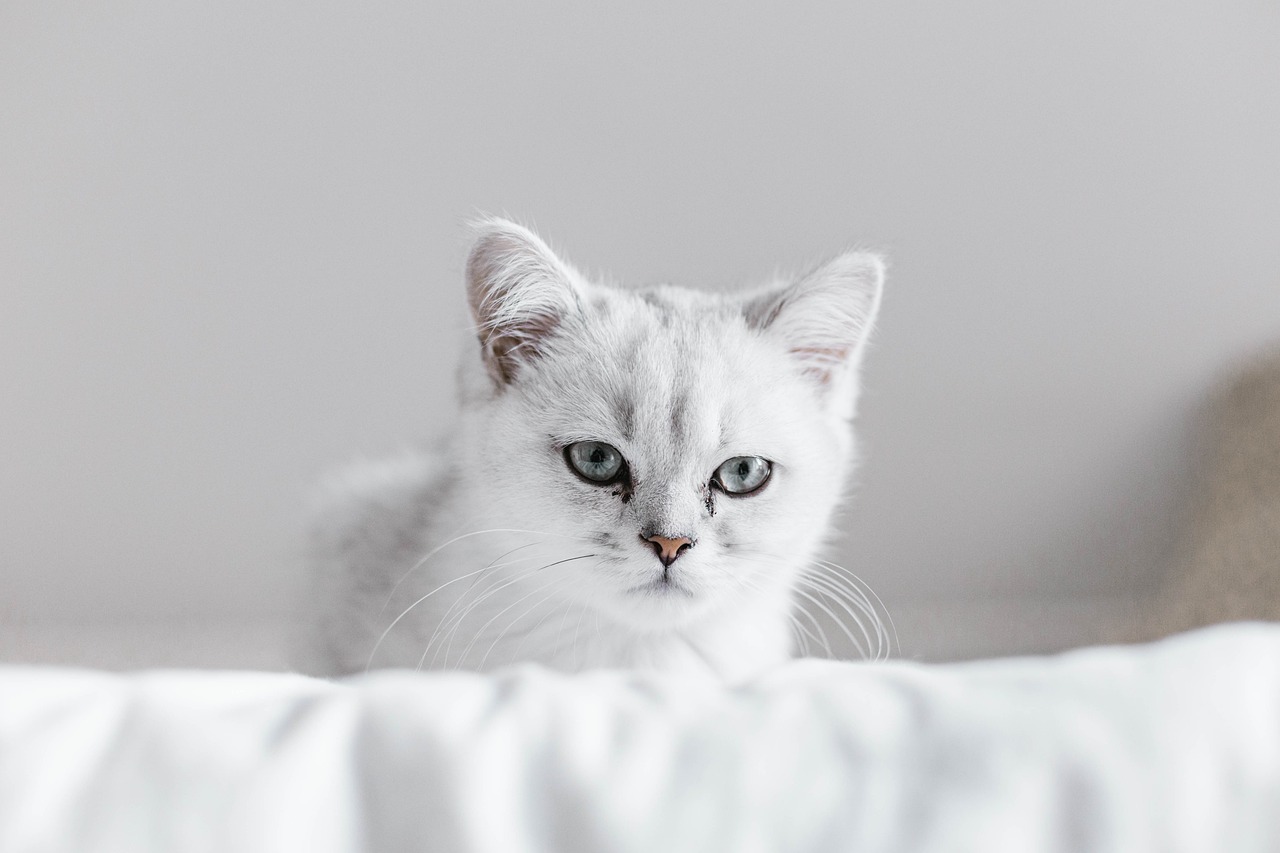
Mental Stimulation
Engaging your feline friend in regular physical activities is not just about keeping them fit; it's about providing essential that plays a crucial role in their overall happiness and well-being. Cats are naturally inquisitive creatures, and when they don't have enough to occupy their minds, boredom can set in. This boredom can lead to unwanted behaviors such as scratching furniture, excessive meowing, or even aggression. Just like humans, cats thrive on mental challenges and varied experiences to keep their brains sharp and engaged.
One of the most effective ways to ensure your cat remains mentally stimulated is through interactive playtime. This is not just about tossing a toy across the room; it’s an opportunity to connect with your pet and enrich their environment. When you play with your cat, you're not only providing exercise but also fostering a deeper bond between the two of you. Think of it as a mini workout session for both you and your furry companion, where the endorphins from the exercise can lead to a happier mood for both parties.
Interactive playtime can take many forms, from chasing feather wands to pouncing on laser pointers. These activities tap into your cat's innate hunting instincts, providing a fulfilling outlet for their energy. The thrill of the chase mimics their natural behaviors, making playtime not just fun but also beneficial for their mental health. Each pounce and leap can be thought of as a mini adventure, keeping their minds alert and their bodies active.
There are numerous types of interactive toys available that can keep your cat entertained for hours. Here are a few popular options:
- Feather Wands: These encourage jumping and pouncing, and they mimic the movements of birds, making them irresistible.
- Laser Pointers: A classic choice that gets your cat moving as they chase the elusive red dot.
- Catnip Toys: Filled with catnip, these toys can stimulate your cat's senses and encourage playfulness.
Each of these toys not only provides physical exercise but also engages your cat’s brain, making them think and strategize during play. It's like a mental workout that can lead to a more balanced and contented pet.
Moreover, the benefits of human interaction during play cannot be overstated. Regular play sessions with you not only provide exercise but also enrich your cat's social environment. Cats are social animals, and spending quality time with their humans can lead to improved emotional health and reduced feelings of loneliness. Just think about it: when you engage with your cat, you’re not just a playmate but also a source of comfort and security. This interaction can help alleviate anxiety and create a more confident, well-adjusted pet.
Establishing a structured exercise routine is another effective way to ensure your cat receives adequate mental stimulation daily. By setting aside specific times for play, you can help your cat anticipate and look forward to these sessions, making them a part of their daily routine. This predictability can be comforting for your cat, providing them with a sense of stability.
In conclusion, providing your cat with mental stimulation through interactive play is essential for their overall health. It not only keeps them physically active but also sharpens their minds, preventing boredom and behavioral issues. So grab that feather wand or laser pointer, and let the fun begin!
Q: How much playtime does my cat need daily?
A: Most cats require at least 15-30 minutes of active playtime each day to stay mentally and physically stimulated.
Q: What are the signs of boredom in cats?
A: Signs of boredom can include excessive sleeping, destructive behavior, or increased vocalization.
Q: Can I use regular household items as toys?
A: Absolutely! Items like crumpled paper balls, cardboard boxes, and string can provide excellent play opportunities.
Interactive Playtime
When it comes to our feline friends, is not just a fun way to pass the time; it’s a crucial part of their health and happiness. Think of playtime as a mini workout session that not only keeps your cat physically active but also mentally sharp. Just like humans need to break a sweat to feel good, cats thrive on the excitement and stimulation that comes from engaging play. Imagine your cat, eyes wide, tail twitching in anticipation as they pounce on a feather wand or chase a laser dot—this is not just play; it’s a workout wrapped in a game!
Interactive playtime creates a unique opportunity for bonding between you and your cat. When you engage in play, you’re not just tossing a toy; you’re building trust and affection. It’s a time for laughter, joy, and connection. Have you ever noticed how your cat seems to light up when you join them in their antics? This interaction can lead to a happier and more fulfilled pet, reducing feelings of loneliness and anxiety. Plus, it’s a great way for you to relieve stress too! It’s a win-win situation!
To keep things interesting, consider rotating through a variety of toys. Here are some popular types of interactive toys that can keep your cat engaged:
- Feather Wands: These mimic the movement of birds, tapping into your cat’s natural hunting instincts.
- Laser Pointers: The elusive red dot can provide endless entertainment as your cat chases it around the room.
- Catnip Toys: Filled with catnip, these can stimulate your cat’s senses and encourage playful behavior.
- Automated Toys: Battery-operated toys can move unpredictably, keeping your cat on their toes!
Each of these toys serves a purpose, but the most important factor is the time you spend playing together. Regular sessions not only provide physical exercise but also enrich your cat's social environment. The joy of a successful catch or the thrill of the chase can lead to improved emotional health for your furry companion. So, grab that feather wand, put on your game face, and let the fun begin!
Q: How often should I engage my cat in interactive play?
A: Aim for at least 15-20 minutes of interactive playtime each day to keep your cat physically and mentally stimulated.
Q: What if my cat is not interested in toys?
A: Try different types of toys and play styles. Some cats prefer chasing, while others may enjoy catching or stalking. Observe what excites your cat the most!
Q: Can I play with my cat too much?
A: While play is essential, watch for signs of fatigue or overstimulation. Always let your cat dictate the pace of play.
Q: Should I supervise playtime with my cat?
A: Yes! Supervision ensures your cat’s safety, especially with toys that could pose a choking hazard or if they become too aggressive during play.
Types of Interactive Toys
When it comes to keeping your feline friend entertained and active, interactive toys are a game changer. These toys not only encourage physical activity but also engage your cat's natural hunting instincts, making playtime both fun and stimulating. There are several types of interactive toys available, each designed to captivate your cat's attention and promote exercise.
One popular option is the feather wand, which mimics the movement of birds in flight. This toy allows you to engage in a playful chase with your cat, providing them with the excitement of the hunt right in your living room. As you wave the wand around, your cat will leap and pounce, getting a great workout while having a blast.
Another favorite is the laser pointer. This tiny beam of light can send your cat darting across the room, chasing after something they can never quite catch. It's a fantastic way to get your cat moving and can lead to some hilarious antics as they try to outsmart the elusive dot. Just be sure to end the play session by pointing the laser at a toy or treat so your cat feels a sense of accomplishment.
If you're looking for something that encourages solo play, consider automated toys. These can include battery-operated mice that scurry around unpredictably or balls that move on their own. Such toys are perfect for those busy days when you can't dedicate time to play. They keep your cat engaged, ensuring they get their daily exercise even when you're not around.
For a more mentally stimulating experience, puzzle feeders are an excellent choice. These toys require your cat to solve a challenge to access their treats or food, combining playtime with mealtime. Not only do they encourage physical activity as your cat bats around the toy, but they also promote mental sharpness and problem-solving skills.
In addition, you might want to explore interactive cat trees that come equipped with dangling toys, scratching posts, and climbing surfaces. These multi-functional structures provide a great way for your cat to exercise, explore, and satisfy their natural climbing instincts all at once. They can leap, climb, and perch, which is not only fun but also beneficial for their muscle development.
Ultimately, the best interactive toy for your cat depends on their personality and preferences. Some cats love to chase, while others may prefer to pounce or solve puzzles. By offering a variety of toys, you can keep playtime fresh and exciting, ensuring your cat remains active and engaged. Remember, the key to a happy and healthy cat is not just in the type of toys you choose but also in the quality of the time you spend together.
Benefits of Human Interaction
When it comes to our furry friends, human interaction is not just a luxury; it's a necessity! Cats are social creatures, and they thrive on the connection they share with their humans. Engaging in regular play sessions and interactions not only provides essential exercise but also enriches their emotional landscape. Think of it this way: just like we need friends and family to feel fulfilled, our cats also crave social connections to feel their best.
One of the most profound benefits of human interaction is the reduction of loneliness. Cats that engage with their owners tend to exhibit fewer signs of stress and anxiety. This is particularly important for indoor cats, who may not have the same opportunities for socialization as outdoor cats. By spending quality time together, you can help your cat feel more secure and content in their environment. This is akin to how we feel after a good chat with a friend; it lifts our spirits and makes us feel less isolated.
Moreover, regular interaction can lead to improved behavioral health. Cats that receive ample attention and playtime are less likely to develop behavioral issues, such as excessive meowing or destructive scratching. Just as a bored child might act out, a bored cat can resort to undesirable behaviors. By incorporating play into your daily routine, you’re not just giving your cat a workout; you’re also nurturing their emotional well-being.
To maximize the benefits of human interaction, consider the following:
- Daily Playtime: Set aside time each day for interactive play. Whether it’s with feather wands, laser pointers, or even a simple ball of yarn, your cat will love the attention.
- Positive Reinforcement: Use treats or praise during playtime to encourage good behavior and create a positive association with human interaction.
- Routine Check-ins: Regularly check in with your cat throughout the day, even if it’s just to give them a gentle pet or a scratch behind the ears.
In conclusion, the benefits of human interaction for cats are numerous and significant. By making time for your feline friend, you’re not only providing them with much-needed exercise but also fostering a loving and supportive environment that contributes to their overall happiness and health. So, grab that feather wand and get ready to bond with your kitty; it’s a win-win for both of you!
Q: How much exercise does my cat need?
A: Generally, cats should engage in at least 15-30 minutes of playtime each day. However, this can vary based on age, breed, and health status. Always consult with your vet to determine the best routine for your cat.
Q: What are the best toys for interactive play?
A: Some popular options include feather wands, laser pointers, and puzzle toys. Each of these can stimulate your cat's natural hunting instincts and keep them engaged.
Q: Can I over-exercise my cat?
A: Yes, just like humans, cats can experience fatigue. Always monitor your cat during playtime and provide breaks as needed to prevent overstimulation or exhaustion.
Q: How can I tell if my cat is enjoying playtime?
A: Signs that your cat is enjoying playtime include purring, playful pouncing, and a relaxed body posture. If they seem disinterested or try to walk away, it may be time to switch activities or end the session.
Structured Exercise Routines
Establishing a structured exercise routine for your cat is not just a fancy idea; it’s a necessity for their overall health and happiness. Think of it as a daily workout plan tailored just for your feline friend. Just like humans, cats thrive on consistency and predictability. By incorporating regular exercise into their daily schedule, you can ensure they get the movement they need to stay fit and active. But how do you go about creating this routine? It’s simpler than you might think!
First, consider your cat's natural behavior. Cats are instinctive hunters, so their exercise should mimic hunting activities. Setting aside time each day for interactive play can be incredibly beneficial. Aim for at least 20 to 30 minutes of playtime, divided into two or three sessions. This not only helps them burn off energy but also satisfies their natural instincts. You can use a variety of toys to keep things interesting, such as feather wands, balls, or even homemade toys that they can chase around.
To make this routine effective, try to stick to a schedule. Cats are creatures of habit, and they will quickly learn when it's time to play. For example, you might choose to have a play session in the morning before you leave for work and another in the evening after dinner. This gives your cat something to look forward to, and it strengthens the bond between you two. Remember, the goal is to make exercise fun and engaging!
In addition to interactive play, incorporating some structured activities can also be beneficial. You might consider setting up a small obstacle course in your living room using furniture, boxes, and tunnels. This not only challenges your cat physically but also mentally. Cats love to explore, and creating a little adventure course can stimulate their curiosity and keep them active.
Lastly, keep track of your cat's progress. Just like a human fitness journey, it’s rewarding to see improvements over time. You can maintain a simple log of their playtime and activities, which can help you notice patterns or changes in their behavior. If your cat seems less interested in play, it could be a sign that they need a new toy or a change in routine.
In summary, establishing a structured exercise routine for your cat is essential for their well-being. By creating a consistent schedule, incorporating interactive play, and keeping things fresh and exciting, you can ensure your cat remains healthy, happy, and engaged. Remember, a well-exercised cat is a content cat!
- How much exercise does my cat need daily? Most cats require at least 20 to 30 minutes of active play each day.
- What types of toys are best for exercise? Interactive toys such as feather wands, laser pointers, and balls are great for stimulating your cat's hunting instincts.
- Can I exercise my cat indoors? Absolutely! Many activities can be done indoors, such as using toys or creating an obstacle course.
- What if my cat is overweight? Consult your veterinarian for a tailored exercise plan and dietary recommendations to help your cat reach a healthy weight.
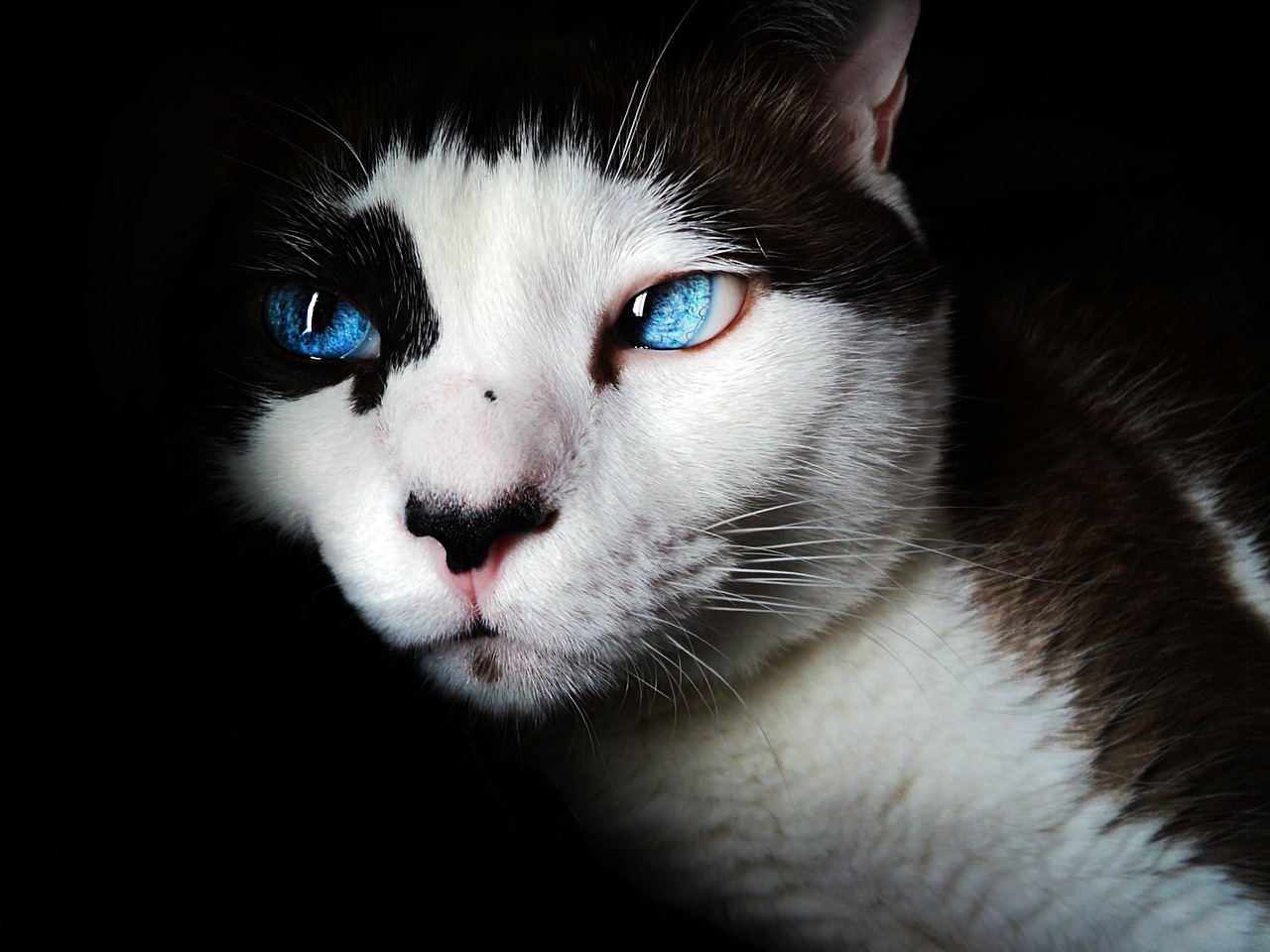
Weight Management
Maintaining a healthy weight is crucial for cats, and regular exercise plays a significant role in preventing obesity and its associated health problems, such as diabetes and joint issues. Just like humans, cats can struggle with weight gain, which can lead to a host of health complications. Imagine your cat as a little athlete; without enough exercise, they can easily become sluggish and overweight. Regular playtime not only helps them burn calories but also keeps their metabolism active, ensuring they stay fit and agile.
Understanding your cat's ideal weight is essential for monitoring their health. Each breed has a different weight range, and what might be considered healthy for one cat could be overweight for another. Regular vet check-ups can help determine the optimal weight range for your feline friend. Your veterinarian can provide you with tailored advice on how to manage your cat's weight effectively, including diet recommendations and exercise plans.
To help you understand the importance of weight management, let’s break down some key factors:
| Health Risks of Obesity | Impact on Quality of Life |
|---|---|
| Diabetes | Reduced energy levels and playfulness |
| Joint Issues | Difficulty in movement and play |
| Heart Disease | Shortened lifespan |
| Respiratory Problems | Increased lethargy |
Understanding your cat's caloric needs and how exercise impacts their diet can help maintain a healthy weight. Cats are obligate carnivores, meaning they require a diet rich in protein. However, simply feeding them the right food isn't enough; you also need to consider how much they are eating versus how much they are exercising. A good rule of thumb is to monitor their food intake and adjust based on their activity levels. For instance, if your cat has been particularly active, you might consider offering a bit more food, whereas a quieter day might call for a reduction in portions.
Incorporating exercise into your cat's routine can be as simple as engaging them in play. Try to set aside time each day for interactive play sessions. These can include using toys that mimic prey, such as feather wands or laser pointers. Not only does this provide physical activity, but it also stimulates their natural hunting instincts, making exercise feel like a fun game rather than a chore.
Ultimately, the goal is to create a balanced lifestyle for your cat that includes proper nutrition and regular exercise. By doing so, you're not only helping them maintain a healthy weight but also enhancing their overall quality of life. Remember, a happy cat is an active cat!
- How often should I exercise my cat? Aim for at least 15-30 minutes of playtime daily, adjusting based on your cat's energy levels and preferences.
- What are some signs my cat is overweight? Look for difficulty in grooming, lethargy, and an inability to feel their ribs easily.
- Can I use treats during playtime? Yes, but ensure they are healthy and account for the calories in their daily intake.
- What types of toys are best for exercise? Toys that mimic prey, such as feather wands, balls, and laser pointers, are great for stimulating your cat's hunting instincts.
Understanding Ideal Weight
When it comes to ensuring your cat's health, understanding their ideal weight is crucial. Just like humans, cats come in different shapes and sizes, and what may be ideal for one feline might not be for another. Factors such as breed, age, and activity level all play a significant role in determining what a healthy weight looks like for your furry friend. For instance, a Maine Coon will naturally weigh more than a Siamese, so it’s essential to consider these differences.
To help you gauge if your cat is at a healthy weight, consider the following methods:
- Body Condition Score (BCS): This is a visual assessment that evaluates your cat's body shape and fat distribution. A score typically ranges from 1 to 9, with 5 being ideal.
- Rib Check: You should be able to feel your cat's ribs without excess fat covering them. If you can’t feel them, your cat may be overweight.
- Waist Observation: When looking down at your cat, there should be a noticeable waist between the ribcage and hips.
Regular veterinary check-ups are also vital for determining your cat's ideal weight. Your vet can provide insights tailored to your cat's specific needs, taking into account their health history and any potential medical conditions. Moreover, they can recommend a personalized diet plan and exercise routine suited to your cat's lifestyle. This is particularly important if your cat is prone to obesity or has other health concerns.
Additionally, understanding your cat's caloric needs is essential for maintaining their weight. The number of calories your cat requires can vary based on their age, size, and activity level. As a general guideline, an average indoor cat needs about 20 calories per pound of body weight to maintain their current weight. However, if you’re looking to help your cat lose weight, you might need to adjust their caloric intake and increase their physical activity.
To illustrate the caloric needs based on weight, here’s a simple table:
| Weight (lbs) | Calories Needed per Day |
|---|---|
| 5 | 100 |
| 10 | 200 |
| 15 | 300 |
| 20 | 400 |
By keeping a close eye on your cat's weight and adjusting their diet and exercise accordingly, you can help ensure they live a long, healthy, and happy life. Remember, a little effort goes a long way in keeping your feline friend in tip-top shape!
Q: How can I tell if my cat is overweight?
A: You can check if your cat is overweight by assessing their Body Condition Score, feeling their ribs, and observing their waist. If you’re unsure, consult your veterinarian.
Q: What should I do if my cat is overweight?
A: If your cat is overweight, consider adjusting their diet and increasing their activity level. Consult your vet for a personalized plan.
Q: How often should my cat exercise?
A: Ideally, cats should engage in at least 20-30 minutes of playtime each day. This can vary based on your cat's age and health.
Q: Can I use treats for training without affecting my cat's weight?
A: Yes, but be mindful of the quantity and choose low-calorie treats. Always account for treats in their daily caloric intake.
Caloric Needs and Exercise
Understanding your cat's caloric needs is crucial for their overall health and well-being. Just like humans, cats require a certain number of calories each day to maintain their energy levels, support their bodily functions, and promote a healthy weight. However, the number of calories a cat needs can vary significantly based on factors such as age, weight, activity level, and overall health. For instance, a young, active cat will need more calories compared to an older, sedentary one. This is where exercise comes into play; it not only helps burn off excess calories but also contributes to a cat's overall fitness and vitality.
To make things easier, here's a simple breakdown of how you can determine your cat's caloric needs:
| Factor | Caloric Needs (kcal/day) |
|---|---|
| Weight Maintenance | 30 x weight in kg + 70 |
| Weight Loss | 25 x weight in kg + 70 |
| Weight Gain | 35 x weight in kg + 70 |
Once you have calculated your cat's caloric needs, you can adjust their diet and exercise routine accordingly. For example, if your cat is on the heavier side, incorporating regular exercise can help them burn those extra calories. Activities like chasing after a laser pointer or batting at a feather toy can turn a mundane afternoon into a fun workout session. On the flip side, if your cat is more active and burns a lot of energy, you might need to increase their caloric intake to ensure they are getting the proper nutrition.
It's also important to consider the type of food you're providing. High-quality cat food will offer better nutritional value and help meet your cat's caloric needs more effectively. Look for foods that list meat as the primary ingredient and avoid those loaded with fillers like corn or soy. You might also want to consult with your veterinarian to determine the best diet plan tailored to your cat's specific needs.
In summary, balancing your cat's caloric intake with their exercise routine is essential for maintaining a healthy weight. Regular physical activity not only helps manage weight but also enhances your cat's mood and energy levels. So, get ready to play, because a happy, healthy cat is just a play session away!
- How much exercise does my cat need? Generally, cats should engage in at least 15-30 minutes of playtime each day.
- What are some good toys for exercising my cat? Interactive toys like feather wands, laser pointers, and balls can keep your cat active and entertained.
- Can I let my cat exercise outside? Yes, outdoor play can be beneficial, but ensure it's safe and supervised to protect them from dangers.
- What signs indicate my cat is overweight? Look for a lack of waist definition, difficulty in grooming, and reduced activity levels.
Frequently Asked Questions
- Why is regular exercise important for my cat?
Regular exercise is vital for your cat's physical health, helping to maintain a healthy weight, improve cardiovascular fitness, and enhance muscle strength. Just like us, cats need to stay active to lead a longer, healthier life!
- How can I tell if my cat is getting enough exercise?
Look out for signs like weight gain, lethargy, or destructive behavior. If your cat seems bored or restless, it might be time to up their activity level. A good rule of thumb is to engage them in play for at least 15-20 minutes a day!
- What types of toys are best for interactive play?
Interactive toys like feather wands, laser pointers, and puzzle feeders are fantastic for stimulating your cat's hunting instincts. They not only provide exercise but also keep your furry friend mentally engaged!
- How can I establish a structured exercise routine for my cat?
Start by setting aside specific times each day for play. Consistency is key! Incorporate a mix of interactive play and solo activities, and make sure to adjust the routine based on your cat’s energy levels and preferences.
- What are the signs of obesity in cats?
Obesity in cats can be identified by a noticeable lack of waistline, difficulty in feeling their ribs, and decreased energy levels. If you’re concerned about your cat’s weight, consult your vet for personalized advice.
- How can I ensure my cat is eating the right amount of calories?
Understanding your cat’s caloric needs involves knowing their ideal weight and activity level. Your vet can help calculate the right amount of food and guide you on how exercise can impact their diet.
- Can I exercise my cat indoors?
Absolutely! Indoor play can be just as effective. Use toys that encourage jumping and chasing, or set up obstacle courses to keep your cat active and entertained, even in a smaller space!
- What if my cat doesn’t seem interested in playing?
Some cats are naturally less active, but you can spark their interest by trying different types of toys or play methods. Sometimes, it just takes a little creativity to find what excites your feline friend!






